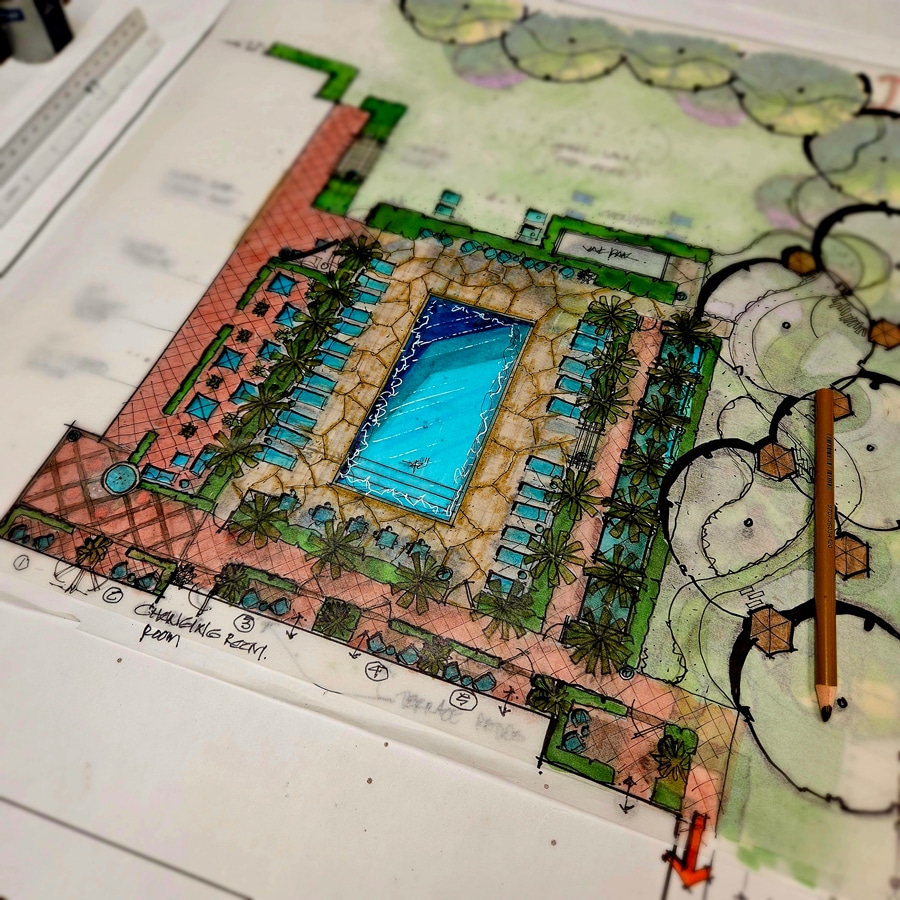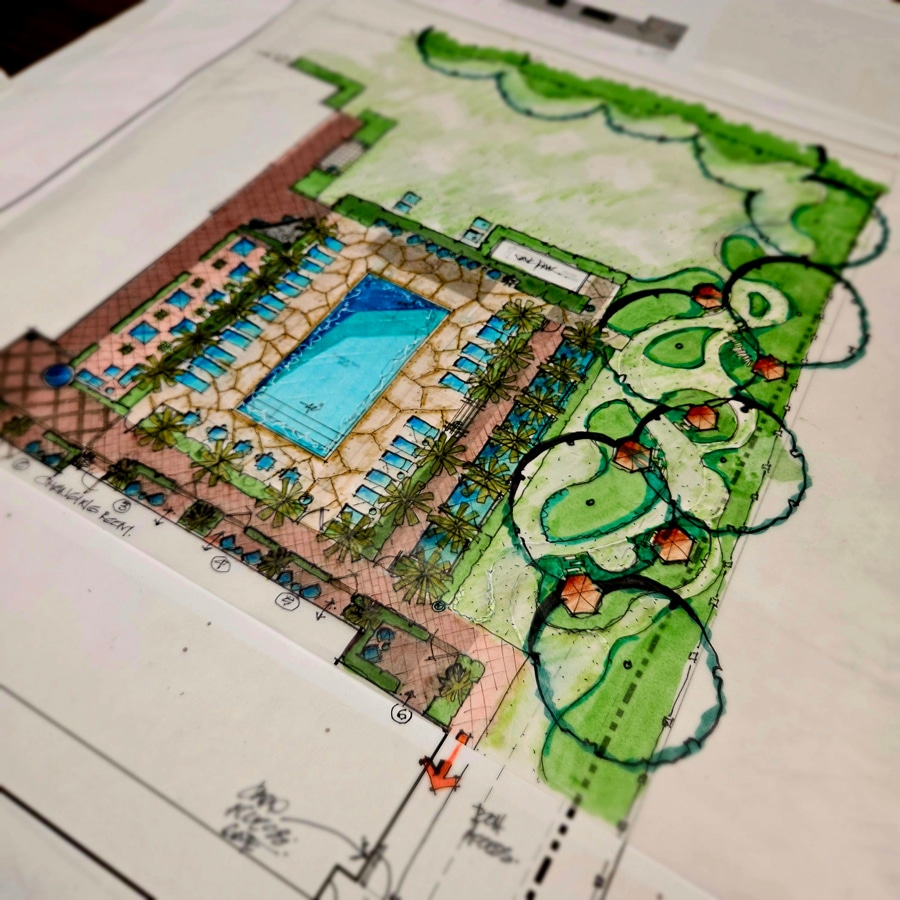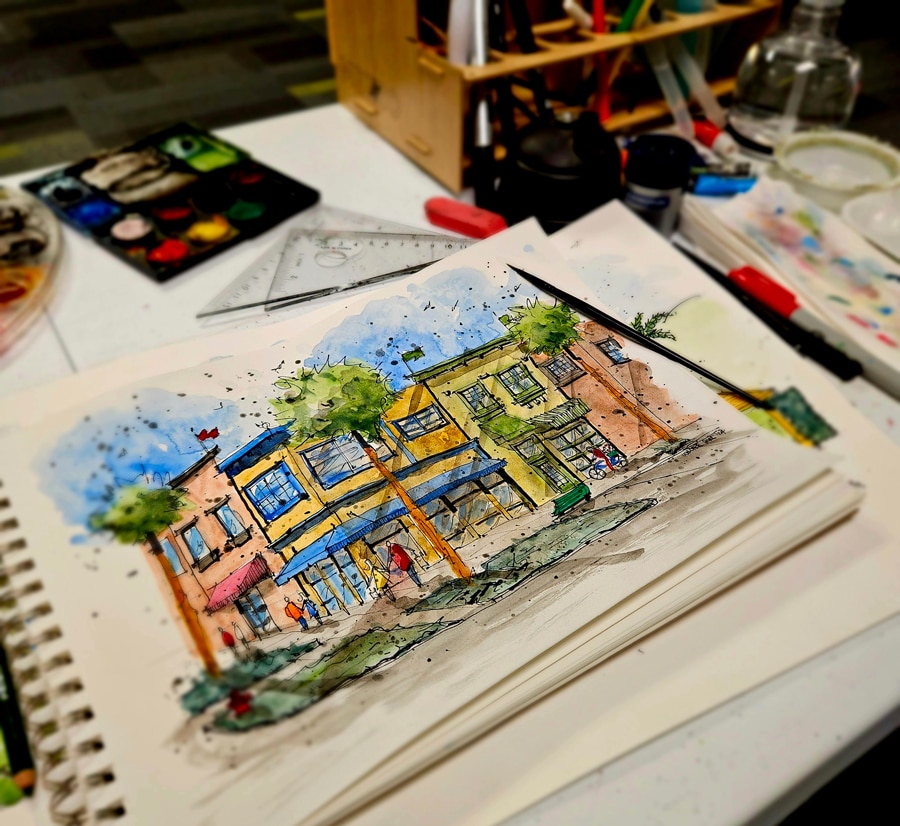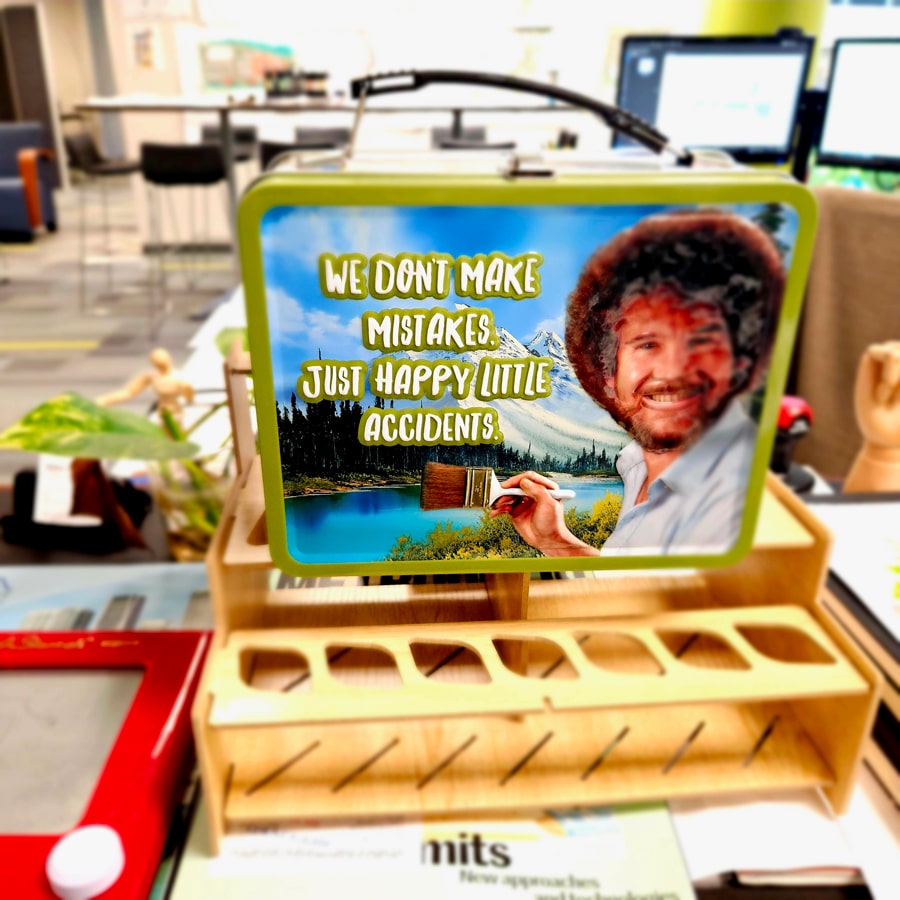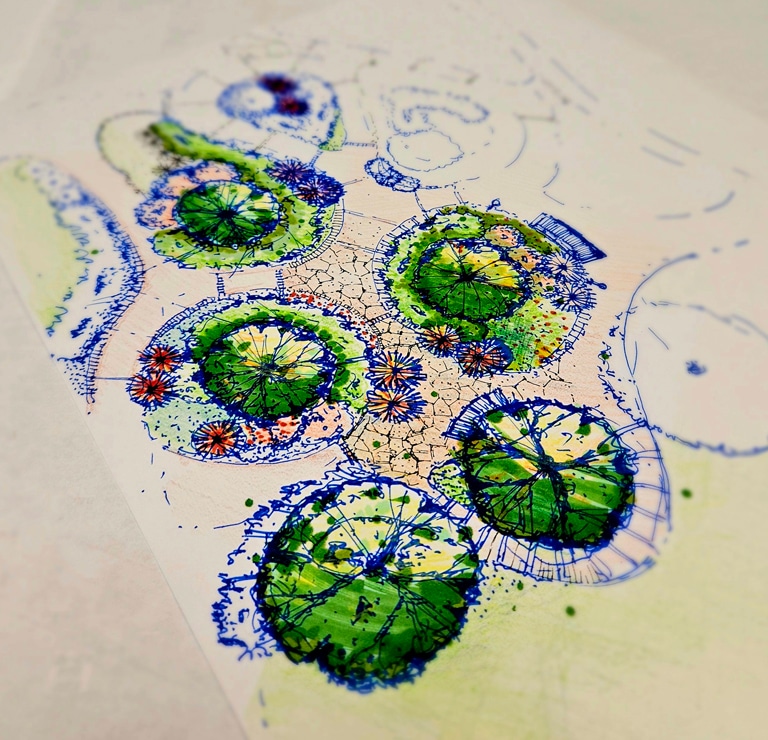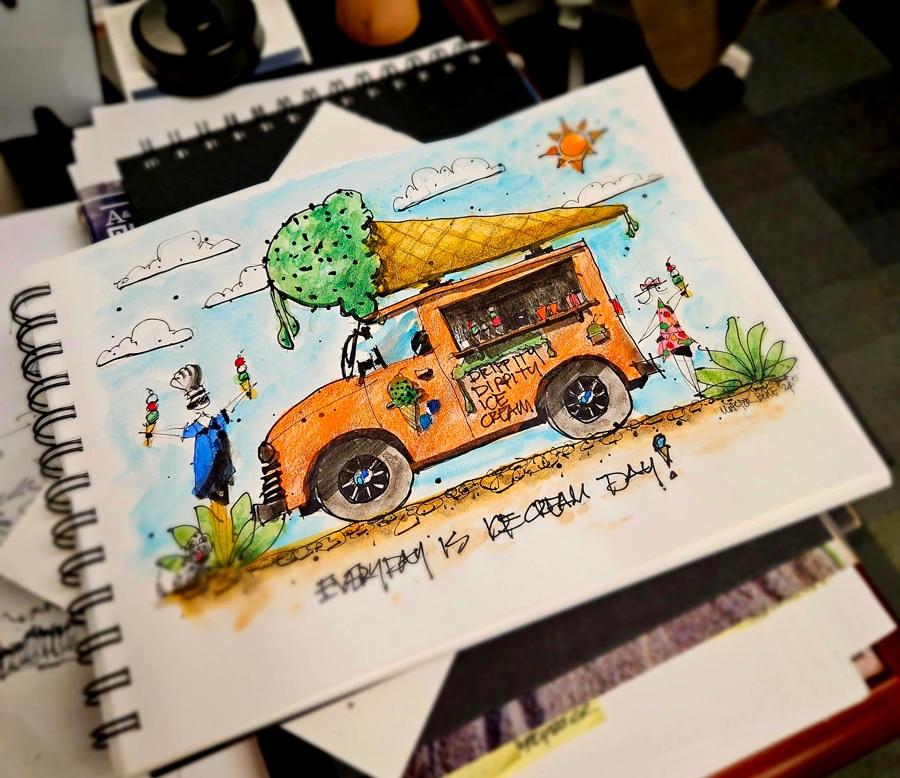April 5, 2024
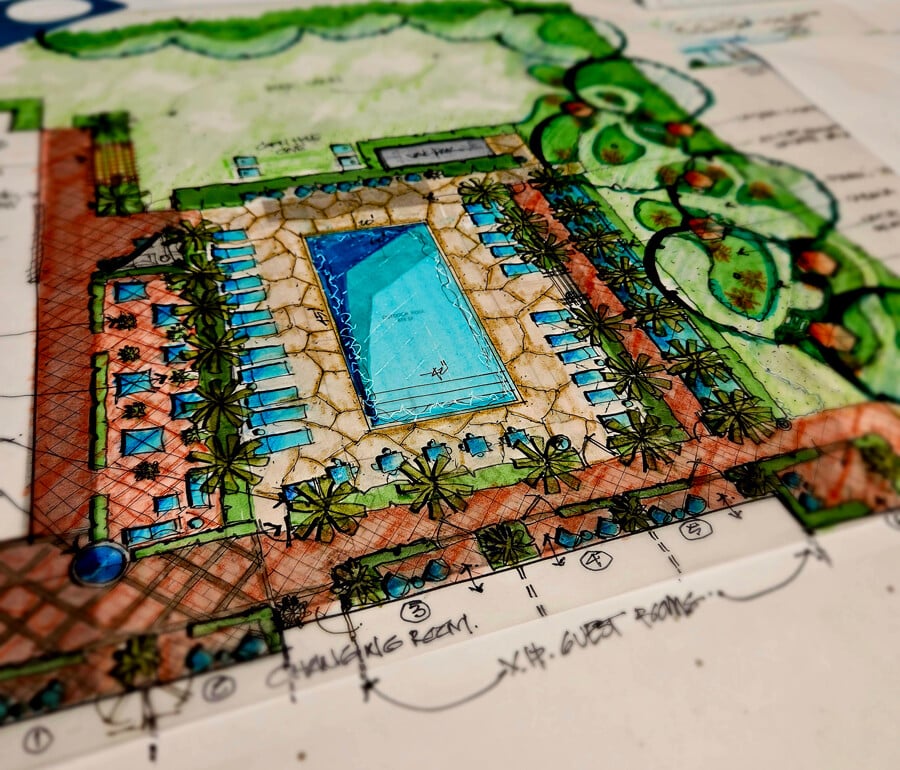
By Walter Bone, Landscape Architect
April is World Landscape Architecture Month (WLAM) and to celebrate, our Walter Bone, a licensed landscape architect, offers some insight into what it takes to succeed in this vital role.
Cuhaci Peterson is a multidisciplinary firm, and I am the lone landscape architect. We’re in our multi-team, multidisciplinary environment. We approach projects the same way per our corporate policy, but with the different professions. As a landscape architect, I look at projects a little bit different regarding building architects, engineers, interior designers and other design professionals. I look at projects with a design approach where I can take care of the environment. I want to be sensitive to the environment, preserving any natural resources that are there, and particularly wetlands, forested areas, tree preservation, et cetera. I look to minimize the disturbance to the wildlife as well.
So, it’s genuinely nice to work on projects where I can approach a project in that manner, a small little gas station or a small little restaurant drive thru. It’s very nice to approach the projects with a sustainable, more nature-based design where we can use some recycled materials, we can use wildlife enhancement, plant material, water features, et cetera. So, it’s nice to incorporate that natural design.
"I've enjoyed my career and most of my projects very much and my work is still extremely exciting and extremely rewarding to me."
Walter BoneLandscape Architect
It’s critical for landscape architects to be involved with each project from the very beginning. When the developer purchases a piece of land, we need to go out and do site visits and do a site survey, a visual site survey, take pictures, photographs, and note all the various elements, and physical elements that are existing on the site. Again, going back to our design approach, some of it is nature-based of course, but looking for critical elements such as wetlands, water, features, creeks, and streams, that we will not disturb, we’ll take notes, we will confer with other disciplines on the design team and note where we need to protect, note where we will enhance and increase the overall value of the property and project.
With that site analysis, we move into a concept design, considering all the elements that we’ve noted on the site. And with our picture taking, we’ll develop a report, a drawing, showing the site analysis and all the critical elements that affect the site, both on and offsite. Those would include environmental, sun, winds, various times of the year, seasonal effects, water sources, whether it be natural storm water, drainage solutions or municipal supplied water. And we take all these elements into effect in coming up with our concept design and working closely with the client to ensure that their design intent, what they envision comes to life.
Our creative design process starts with the client’s needs and the end results they’re looking for. After the initial concept site analysis is done, we move into a bubble diagram or a land use relationship and examine how different parts of the site, various parts of the project come together and how they relate to one another. And with that, the design will start appearing and you will see how the different areas, or the different uses relate to one another and how they interact with one another. And this will influence the pedestrian circulation and vehicle circulation of the project depending on project type. So it’s very clear as you’re going through the design process from your initial analysis into concept design schematic and so forth, that as the process is developing and you’re creating the concept design, you have all these other elements with the pre-work that was performed and research you have done, and it really comes to life.
You can see it coming out of the paper while you’re sketching, you’re drawing. It really starts developing itself, becoming its own life form. The design process and getting to that point is just a matter of doing a lot of hand sketches layer upon layer upon layer of sketch paper. And it’s really a very cool process to go through, creating and coming up with the concept and then ultimately presenting it to the client and getting their reaction. When you see a smile on their face, it’s wonderful and you’ve achieved what you started out to do. And so, when you get through that concept phase, there may be a few comments and a few little tweaks and adjustments here and there, but it’s fantastic and it’s a great learning experience as well. Regardless of how old you might be, you still learn from project to project.
The built form or the man-made form is critical as well. And so, working with building architects and the built environment, it is very, very intriguing to me as a landscape architect. As a designer, I want my landscape or my outdoor environment to blend with the interiors and with the materials of the building, the architecture, the design itself, the structure where I want to take the outdoors and bring it in or the indoors and bring it out through the use of color, texture, materials, repetition and the theming as well.
So, I use the materials by repeating them through the landscape which may have wood and I may take that same wood and use it through site furnishings, park benches, trash receptacles, small bridges over water features or what have you. It’s just a fantastic process in collaborating with other disciplines. Here at CP when we’re brainstorming, we’re throwing ideas out, we have our tracing paper and we’re going layer upon layer upon layer of unique design ideas and coming up with that fantastic design. So, collaborating closely with the designers or the discipline of the built environment is extremely critical in the success of my work or my team’s work for the landscape architecture aspect of the project.
Projects come alive, and again, it goes back to the inspiration, the creativity or the creative phase initially during your site analysis and moving into concept and bringing projects alive. I always prefer to create a wow effect when a person arrives to the project, regardless of the project type. It could be a public park, it could be a theme park, a water park, it could be a school, it could be an office building, but creating that wow effect, or some may call it small curb appeal, but I want more than just a curb appeal. I want to create a wow effect. When people arrive to whatever the project may be, I want them to go, wow, look at this. This is fantastic. And we have so much fun on our multidisciplinary design teams here that one person brings up an idea, another one brings up another idea, and we combine everyone’s ideas together and we all stand back and go, wow, this is fantastic.
And we’re so eager to go meet with the client. We’re ready to go see the client and sit down with them, have dinner with them, and present the idea. That’s how excited we get. So, bringing the project alive, it is really many facets to getting to that point and achieving the design goals and the income goals by the client. Creating that wow effect or other elements within the design to make it come alive is critical and very, very important to have these organized thoughts arranged in a cohesive manner on the drawing board and really have it all culminate into one big grand design and with the wow effect upon the guest or the customer’s arrival is really critical in the success of the project.
Giving a building personality, whether it’s during the daytime or nighttime, you will have significant design effects and viewpoints on your project. And creating both a cohesive building or structure and landscape design that complement one another and creating the various effects that can be achieved through lighting, planting, shade and shadow effects. Creating texture with the architecture and with the landscape is just fantastic. And with our design approach, we really look at buildings, not only just at the daytime model or with the sunshine midday, but we look at it at different times of the day and different times of the year where the building structure itself will take on different personalities based on sun angles, night lighting, parking lot, lighting, accent lighting up, architectural feature lighting, landscape lighting up or down lighting and trees and so forth, which we can really create a very, not exotic, but a very dramatic effect on the building day and night.
Our design process is very collaborative. We have constant meetings, most of the time in person. We say, come on, let’s go! We jump on a conference table; we lay out the drawings or do markups. Everybody comes to an agreement, then everybody separates, goes back to their stations and continues to work on the design. We also have, with our other offices, Teams meetings where we will collaborate on the design and ensure that one office may be producing or responsible for production.
So, we ensure that the design integrity is maintained amongst all disciplines to make the client happy and be consistent and minimize costs during construction as well. So, we are extremely collaborative through the drawing review process. We have folks who have not worked on the projects reviewing the drawings and looking at details, our layout and dimensioning grading and drainage, everything that we work.
Myself as a landscape architect and area development manager, I look at all the utilities, architectural, structural foundations, footings, utilities, and I coordinate everything. There will not be any issues when it comes to construction where there’s not going to be any conflicts where they must go back and dig up and redo work. So, looking at different elevations underground, making sure the pipes and utilities, there’s not any conflicts. We have our proper pressure lines that are not conflicting with any drainage, other drainage lines and so forth.
I’ve been fortunate to see a lot of places and do so many different projects in my professional career, which has spanned 35 plus years, coming up on 36 in a couple of months. I’ve lived around the U.S. and worked from the west coast to the east coast, Midwest, southeast, southwest. And growing up, I even lived in Mexico City for a couple of years.
There are so many different experiences and projects that it would take a long time to list them all out, but I can tell you with great certainty, I’ve enjoyed my career and most of my projects very much and my work is still extremely exciting and extremely rewarding to me.
World Landscape Architecture Month let’s folks know that it’s not only just a profession or professional month dedicated to our professional landscape architecture, but it also takes on a different meaning to many different people in the related professions. So, with April being the beginning of spring, depending on where you live, flowers are starting to bloom. April is an ideal time to hold landscape architecture month. It’s a rebirth, a renewal of life as everything’s blooming. Leaves are growing back on trees again, depending on where you live.
But the professional landscape architecture has meant so much to me throughout my career, that having a month celebrating our profession is just fantastic. Of course, I do it throughout the year, but I also look to donate time to assist and educate the general public, children’s classes, whatever I can do to teach folks or allow them to pick up and learn what landscape architecture is and see if I can slowly or nudge a little bit to see if they would like to become a landscape architect.
It’s a fun discipline and you have a fun time. It’s extremely fulfilling to see people, the general public, enjoy your spaces, whether it be a public park, a schoolyard, a large urban plaza, streetscapes, a golf course, or whatever we may design. To see people and experience what they’re experiencing for the first time and enjoying the spaces that we design is, well, it’s perfect!
About Cuhaci Peterson®
Cuhaci Peterson is a nationally recognized architecture, engineering and planning firm specializing in end-to-end commercial design solutions. Headquartered in Central Florida, the firm has representatives throughout the United States and is licensed in all 50 states. Cuhaci Peterson’s mission of transforming ideas into a value is enhanced by a staff of experts who collaborate with clients to translate visions into designs that elevate brands.
Media Contact
Kraig Koelsch
Manager, Marketing and Communications
407-661-9100
kraig.koelsch@c-p.com
Cuhaci Peterson Maitland (HQ)
Newsletter
Subscribe to our newsletter and get the latest news and updates

